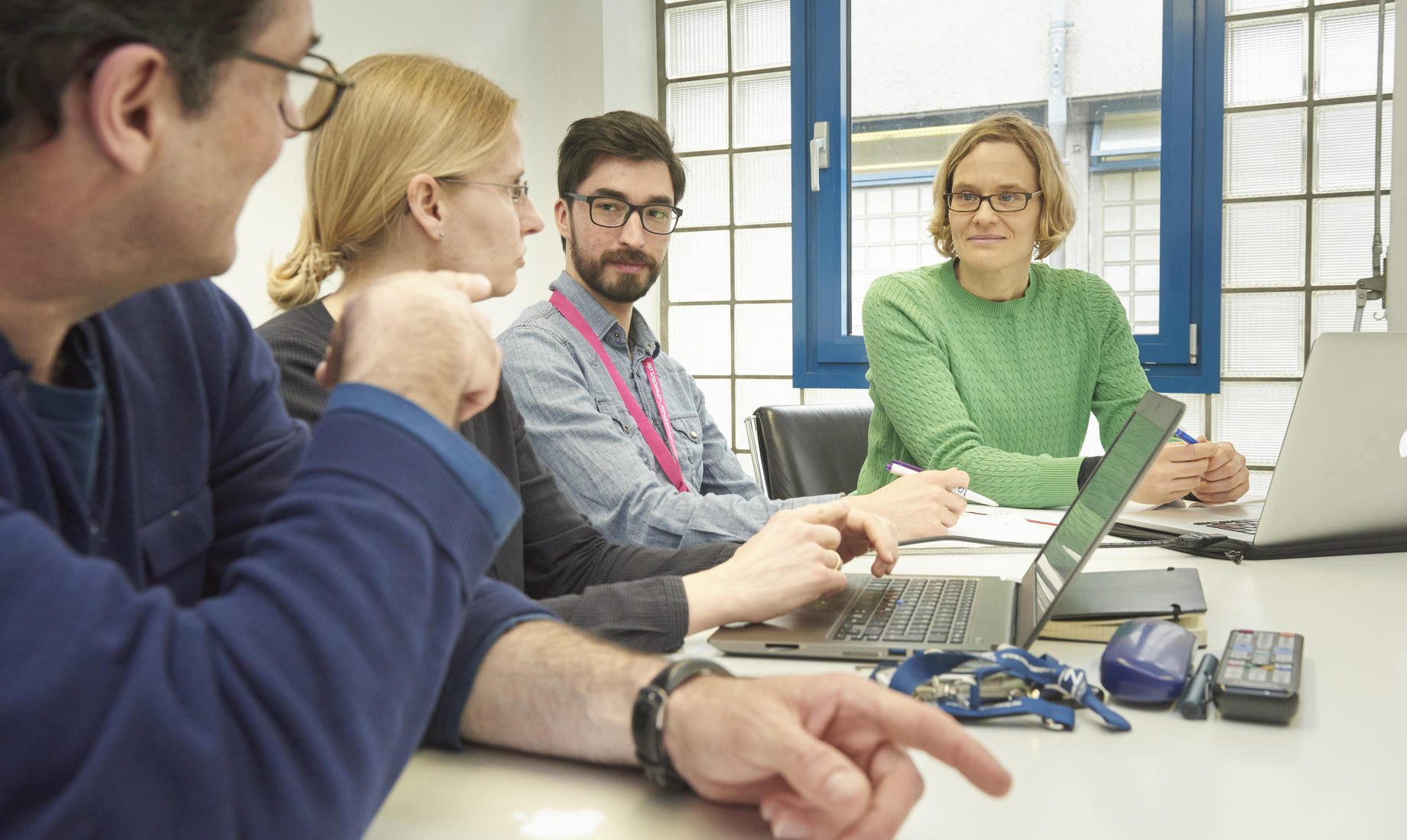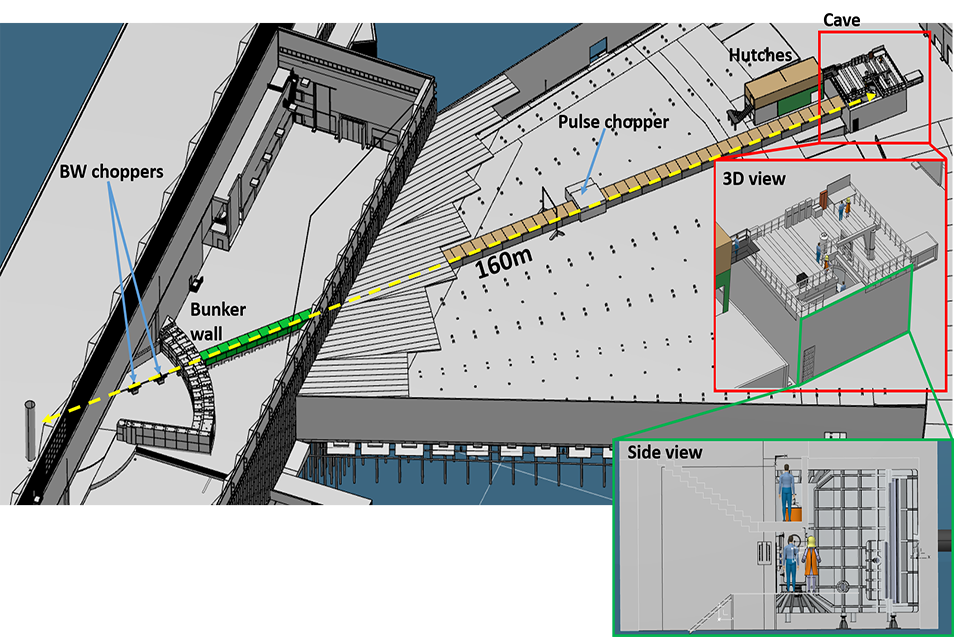
By Teresa Kiechle, Research Neutron Source Heinz Maier-Leibnitz (FRM II/TUM)
Interview. European Spallation Source instrument scientist Pascale Deen talks to FRM II about the CSPEC collaboration, the future of reactor-based neutron sources, and balancing the needs of her family with those of her family of fellow scientists.
GARCHING—Born in the Netherlands, physicist and European Spallation Source (ESS) instrument scientist Pascale Deen now lives in Lund, Sweden, and does not have to think long about what she appreciates most about her monthly visits to Germany’s FRM II neutron source.
“Normally the weather is much nicer here in the winter,” she replies immediately and laughs when looking out of the window of the Campus Café in Garching: Bavarian winter weather at its worst; cold, cloudy and rainy.
“Seriously, I really appreciate the expertise here. There is more than 30 years of experience at FRM, so you can just go to people and ask questions. It’s a functioning facility, close to a university, which means that students are often involved in many of the research projects. The students force you to explain in detail what you are doing.”
According to Deen this is very important and helpful for research institutes, especially regarding scientific communication.
“I work with many different people from different cultures, both with scientists and engineers. We often speak totally different languages, whether this is between people from different nations or different disciplines. Amongst scientists it is easy to speak, we can use our own language. However the communication with engineers can sometimes be challenging, because of our different backgrounds. The close contact to students forces us to constantly explain our work and therefore facilitates the internal and external communication.”
'We need to preserve research reactors'
Deen works as an instrument scientist at ESS in Lund, and is lead scientist for CSPEC, the cold chopper spectrometer designed for ESS. The instrument and the facility are under construction, with the ESS scientific user program scheduled to begin in 2023.
“ESS will be ideal for very unique and special experiments. But very important general and fundamental research will still be performed at research reactors like FRM II. This is vital and gives us important findings about materials behaviour. Many aspects of the work require neutron scattering to extract the required information, so we need to preserve research reactors.”
Her eyes show her enthusiasm for her work that appears to be more of a vocation than an occupation for Deen.
“Reactors have bad press, but are necessary for materials science research, which is very exciting and it’s a fun life. I went to ESS to build an instrument and now I´m working with people from many different cultures, with brand new technologies and the best instruments in the world.”
As lead scientist, Deen is part of an international, cross-institutional team building the cold chopper spectrometer, CSPEC, at ESS. Her colleagues at FRM II, which is part of the Technical University of Munich (TUM), will shortly be developing the guides and focusing on finalising the technical drawings for the vacuum housing, which includes the integration of the chopper cascade. The other part of the team at Laboratoire Léon Brillouin (LLB) is focusing on the secondary spectrometer, the detector tank and the integration of the detectors within this tank.
“Our next steps include detailed shielding calculations to focus on the shielding concepts. The hot commissioning is envisaged early 2022,” says Deen.
'Science is tough, but very collegial—we work together very closely'
The physicist travels much for her work, jets between Lund, the United States and Germany and joins meetings around the world. Deen’s husband is also a scientist, and she therefore regularly needs to check the family calendar.
“It is tough but we really believe in what we´re doing. And I think my work also gives many opportunities to my children. They are always curious about my research and ask many questions, so I tell them how we create neutrons and make them travel.” It puts a big smile on the physicist´s face when talking about her kids. “I think children understand much more than we often expect.”
With a twinkle in her eye Deen remembers her own childhood. “I was a little bit of a nerd. I found libraries fascinating and I still love them. I liked the difficult things and always tried to solve every problem, even if I couldn´t.”
Deen kept alive her curiosity and thirst for knowledge, completed her PhD, and is passionate about her scientific life, even if it´s challenging sometimes.
“Science is very tough. Your ego is often bashed, because science involves a setting where people constantly question your results. But the work is very collegial and supportive, too, and we work together very closely. If you show enthusiasm, scientists are like a nice little family.”
'I want to show that it is possible to have a family and a scientific career'
The 41-year-old gained working experiences in Sweden, France and Germany. Regarding women in science, the conditions are not the same everywhere.
“There are big differences, because the cultures are very different. But it is getting much better. I want to show that it´s possible to have it all, a family and a scientific career. You have to work hard, but it´s possible. I think you should not be defined by what culture tells you to do or not to do. As a child I lived in different countries, so I never experienced a single culture and I never made decisions because I´ve been told to do so by my social environment. But, no matter what you do, it should be enjoyable. Besides, in physics, people judge you about what you know and not on your sex.”
Equally, acceptance of research sites themselves is different. The European Spallation Source, as a spallation-based neutron source, does not face the same level of public scrutiny that reactor sources like FRM II and Institut Laue-Langevin have struggled with. Deen explains:
“In Sweden there is a huge enthusiasm for ESS. Of course, people are concerned about safety, but the issues are not the same when compared to Germany. People are very enthusiastic about the best facility coming to Sweden, because it also brings new industries and money to the region. We have many groups visiting the site and many curious school kids, which is fantastic. The interest in ESS is widespread amongst all people from very differing backgrounds.”
Deen puts her hands around her cup of hot black tea with milk—a remnant of her childhood in Ireland—and, with some humour, adds another difference between Lund and Garching: “The food.” Admittedly, with her dad as a restaurant owner, the canteen cannot compete.
This article was first published as part of the FRoM behind the SCiENcES series at MLZ-Garching.de, and has been lightly edited from the original.


























